How to Calculate Credit Card Minimum Payment and Interest
advertisement
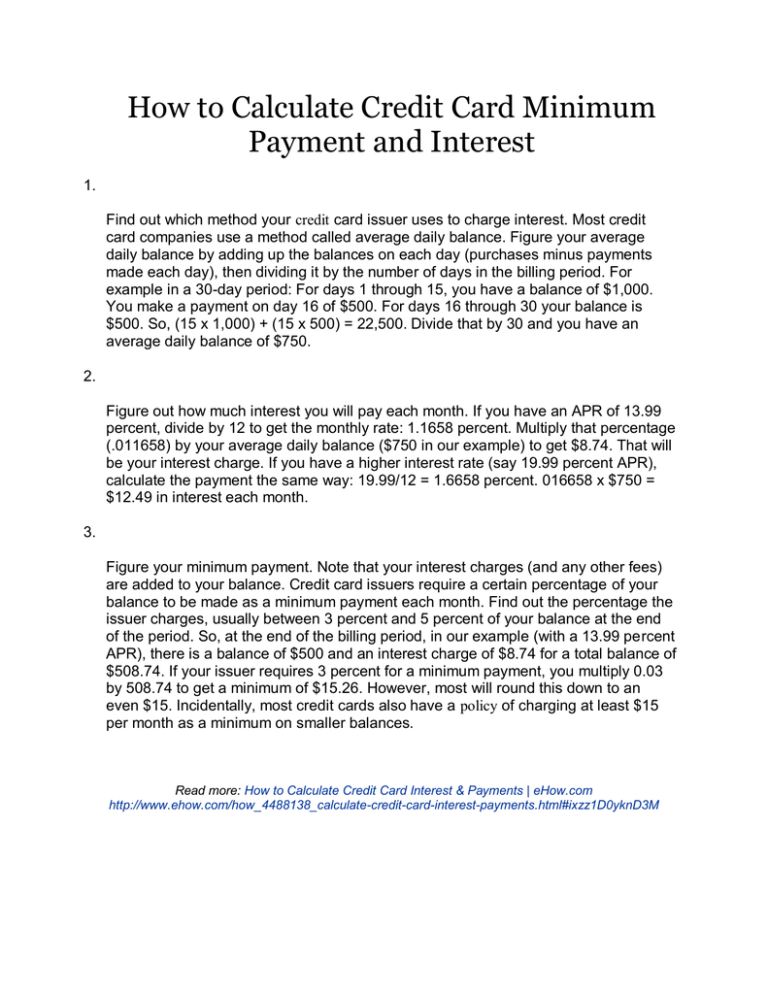
How to Calculate Credit Card Minimum Payment and Interest 1. Find out which method your credit card issuer uses to charge interest. Most credit card companies use a method called average daily balance. Figure your average daily balance by adding up the balances on each day (purchases minus payments made each day), then dividing it by the number of days in the billing period. For example in a 30-day period: For days 1 through 15, you have a balance of $1,000. You make a payment on day 16 of $500. For days 16 through 30 your balance is $500. So, (15 x 1,000) + (15 x 500) = 22,500. Divide that by 30 and you have an average daily balance of $750. 2. Figure out how much interest you will pay each month. If you have an APR of 13.99 percent, divide by 12 to get the monthly rate: 1.1658 percent. Multiply that percentage (.011658) by your average daily balance ($750 in our example) to get $8.74. That will be your interest charge. If you have a higher interest rate (say 19.99 percent APR), calculate the payment the same way: 19.99/12 = 1.6658 percent. 016658 x $750 = $12.49 in interest each month. 3. Figure your minimum payment. Note that your interest charges (and any other fees) are added to your balance. Credit card issuers require a certain percentage of your balance to be made as a minimum payment each month. Find out the percentage the issuer charges, usually between 3 percent and 5 percent of your balance at the end of the period. So, at the end of the billing period, in our example (with a 13.99 percent APR), there is a balance of $500 and an interest charge of $8.74 for a total balance of $508.74. If your issuer requires 3 percent for a minimum payment, you multiply 0.03 by 508.74 to get a minimum of $15.26. However, most will round this down to an even $15. Incidentally, most credit cards also have a policy of charging at least $15 per month as a minimum on smaller balances. Read more: How to Calculate Credit Card Interest & Payments | eHow.com http://www.ehow.com/how_4488138_calculate-credit-card-interest-payments.html#ixzz1D0yknD3M
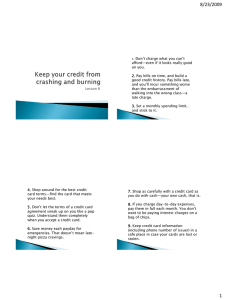

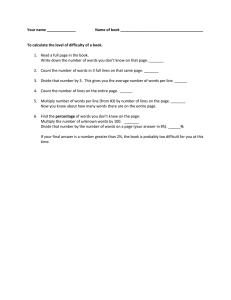
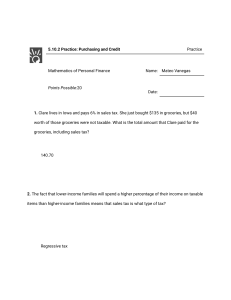
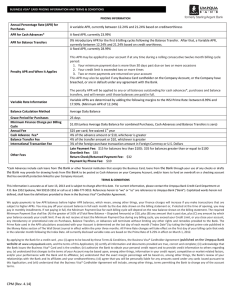
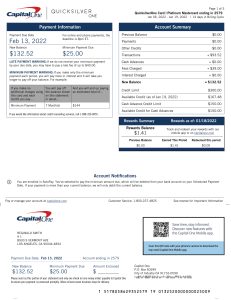
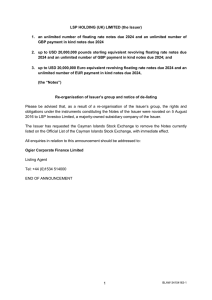
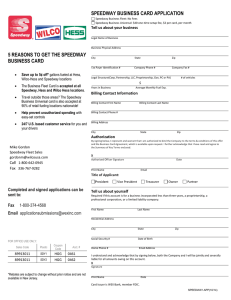
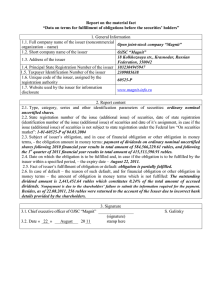
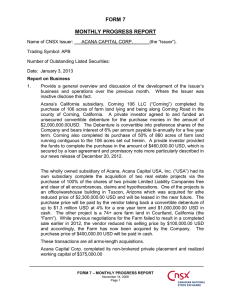

![141 PART E [See regulation 57(2)(b)] DISCLOSURES IN LETTER](http://s2.studylib.net/store/data/018582127_1-6ca8192dd3b0cccbeb4967621d65b2b1-300x300.png)